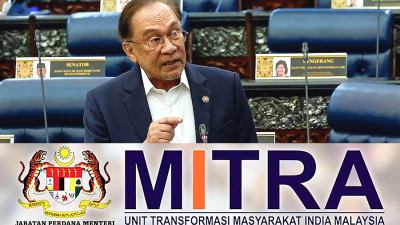
The question is not whether the United States (US) will enter the Iran–Israel conflict full scale. It already has, even before the US airstrikes on Iranian nuclear sites just hours ago.
Satellite intelligence, drone coordination, aerial refueling—all of it was already in motion, long before the bombs fell, as openly acknowledged by the Department of Defense itself.
The Pentagon may not have declared war, but its machinery has long been moving.
What remains uncertain is not involvement, but exposure. And what stands to be exposed is not just a fragile regional balance, but the broken architecture of global power itself.
At the heart of this uncertainty lies a simple but devastating truth: the US is no longer a unified geopolitical actor.
It is a fragmented entity, split between a corrupt, inertia-driven military-industrial complex and a political outsider in Donald Trump who is openly attempting to dismantle that very machine.
These two factions not only pursue different goals—they operate from entirely different paradigms. And nowhere is this more consequential than in the Middle East.
Trump’s vision, for all its contradictions, is largely inward-looking. He seeks to recenter American political life around domestic repair: consolidating a fractured union, decoupling from unsustainable global entanglements, and, perhaps most critically, preventing the use of nuclear weapons, whether in Ukraine or Iran.
Trump understands, however crudely, that a single nuclear incident would not trigger a “regional escalation,” but a global existential collapse. And with no escape plan to Mars yet, this is not a bluff.
The corrupt US military-industrial establishment, by contrast, thrives on perpetual motion.
Conflict is not a failure of diplomacy—it is the business model: a profit-driven ecosystem fed by dollar dominance, endless war cycles abroad, and technological intimidation.
Today’s warfare has become a lucrative multi-sector enterprise, spanning semiconductors, satellite constellations, and private security, with contractors and mercenary firms now plugging battlefield gaps in real time.
At its core lies the US dollar’s “exorbitant privilege,” allowing the system to borrow cheaply and spend endlessly, sustaining a machinery that now runs largely on autopilot.
Add to this a revolving door between Pentagon officials and defense firms, and a constant inflation of threats to justify spending, and the result is clear: even absurd provocations are greenlit, not from necessity but from momentum.
As Iran’s leadership put it with cutting clarity, the US is no longer striking strategic targets— it is striking at mere smoke.
The enduring lie is that the nuclear threat itself, once the US deep state’s ultimate trump card, is rapidly losing meaning.
In an era of advanced non-nuclear weaponry, from Russia’s hypersonic arsenal to Iran’s drone precision—the deterrence logic that shaped the Cold War no longer applies.
Why deploy weapons that guarantee mutual annihilation when conventional strikes can now deliver scalpel-like precision and massive strategic disruption, disabling satellites, air defenses, or command grids, without radioactive fallout or indiscriminate civilian destruction?
Yet the old guard clings to outdated myths, and with them, the dangerous illusion of control.
In this light, any state that still pursues collective punishment under the guise of deterrence is not defending itself.
It is exposing itself. And nowhere is this more apparent than in the US–Israel doctrine, where obsolete logic now conceals deliberate brutality.
But while the old powers cling to fading myths, other states are undergoing a different kind of reckoning.
Iran, too, is divided, but its fracture line runs differently. On one side are patriotic factions seeking strategic sovereignty and civilizational dignity; on the other are compromised elements aligned with foreign interests.
Tehran just demonstrated this: state security forces recently arrested alleged Mossad-linked operatives, including those reportedly tasked with supplying missile targeting data.
Unlike the US, Iran’s internal war is now being clarified. The recent escalation has acted as a national x-ray, revealing who responds to national imperatives and who follows imported scripts, as explored by EMIR Research in “Deterrence unscripted: What the Iran–Israel escalation really revealed.”
In this sense, the war is not just defensive. It is diagnostic. A purge of illusion.
What, then, does it mean if the US formally escalates?
First, it will accelerate its own internal collapse.
A direct war with Iran would expose the incoherence of US foreign policy: a country unable to honor treaties across administrations or restrain its war machine, even under a president who consistently and publicly opposes full-scale conflict.
The contradiction only makes sense once it’s clear he is not leading a unified state, but wrestling with a system that wages war on autopilot.
Second, it will consolidate Iran’s internal unity, transforming fragmented command into a war-forged coherence.
Third, it will push global audiences, especially in the Global South, into open narrative opposition against American-led coalitions.
The US will not lose only militarily. It will lose morally, discursively, civilizationally.
And finally, Israel—whose political time is already expiring—may find itself truly alone.
Once buffered by US impunity, it now stands exposed. No longer the center of moral gravity, it has become a symbol of collapse.
The Zionist project, as argued by EMIR Research in “Zionism at the edge: The terminal overreach of a fading project,” has entered its final, unsustainable phase.
Its survival, once premised on external support, now hinges on a system: the US war engine, itself in terminal entropy.
Ironically, Trump’s current strategy may be to delay rather than confront. Let the deep state drain its ammunition, burn its credibility, and reveal its own dysfunction.
From this vantage, Iran becomes not a threat, but a mirror—exposing the limits of empire and the rise of a world no longer beholden to it.
China and Russia quietly benefit. So, too, does Trump—whose own domestic restoration relies on exposing the very system that seeks endless war.
Some now expect Russia or China to intervene directly. But that outcome is unlikely and deeply dangerous.
Both powers understand that open escalation would trigger cascading consequences on the scale of a nuclear event, drawing the entire world into catastrophe.
Russia, in particular, has demonstrated a different doctrine under Putin: limited, ground-based intervention aimed at specific strategic objectives, as it did in Syria against ISIS.
But that model is neither necessary nor appropriate here.
Iran is holding the line. The message has already landed.
There is no need for the world to start shooting at itself.
What this moment reveals is not merely a geopolitical contest. It is a struggle over meaning itself, between those rewriting the story of power, and those clinging to a script that no longer fits the stage.
(Dr Rais Hussin is the Founder of EMIR Research, a think tank focused on strategic policy recommendations based on rigorous research.)
ADVERTISEMENT
ADVERTISEMENT








































